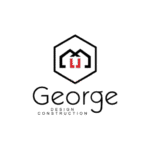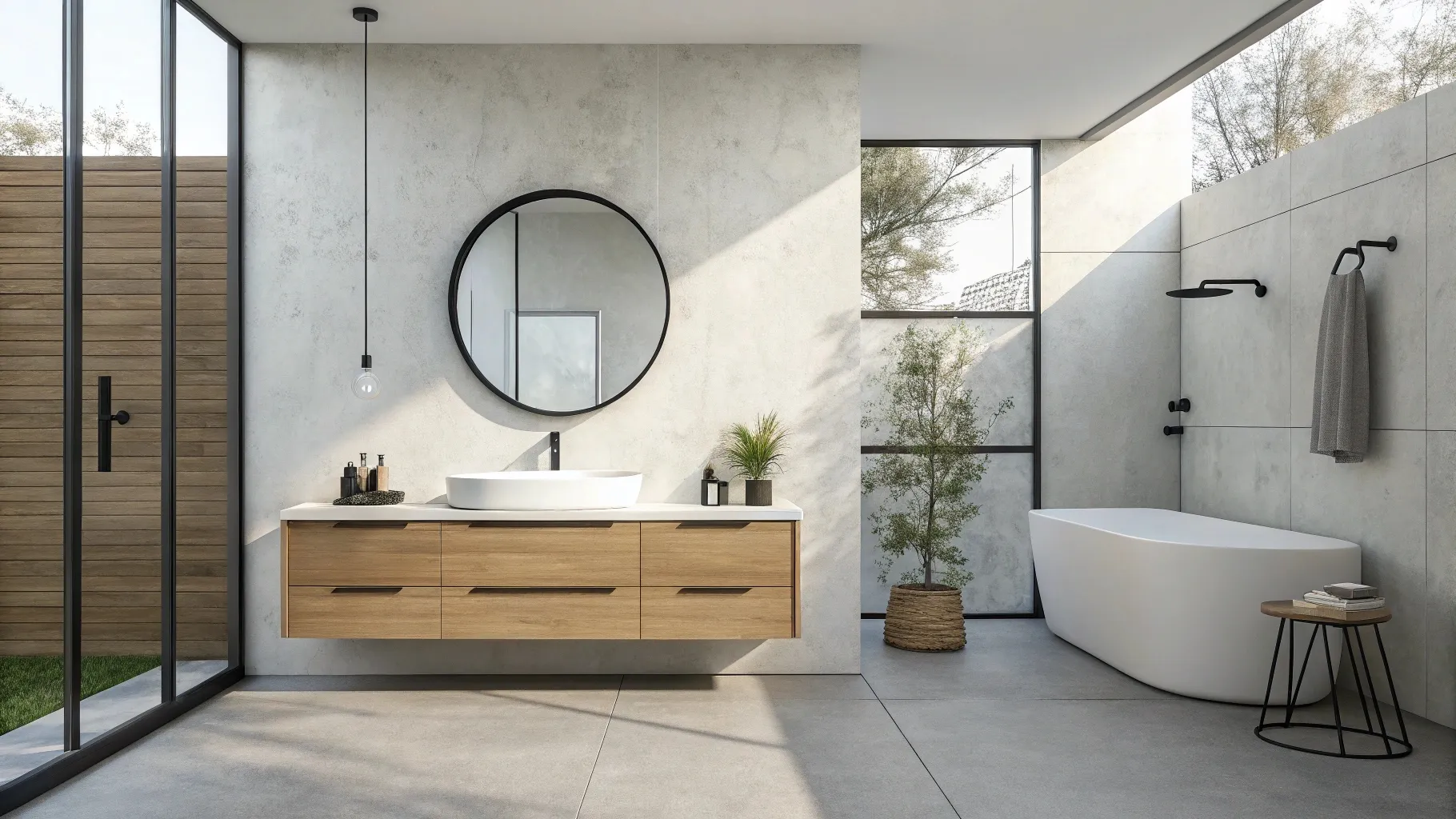How to Save Tens of Thousands on Your Hotel's Water Bill Just by Replacing Your Toilets
Hi everyone, I'm Helen.
I was on an online forum for property owners the other day and saw a post from a manager who had just received a record-breaking water bill. His word for it?
“Pure insanity.”
As a 10+ year veteran in the sanitary ware industry—who started on the factory floor—and as a new mom who now scrutinizes every household expense, I completely understand that feeling of helplessness when you see costs spiraling out of control. That ever-increasing water bill is silently eating away at your hotel's profits.
And more often than not, the biggest leak in your budget is coming from the one place you might not be looking: your hotel's outdated, inefficient toilets.
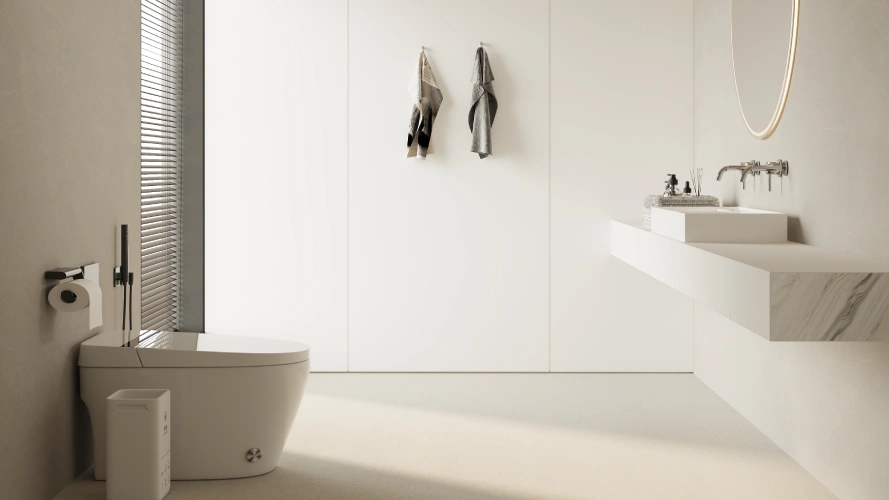
But this article isn't about vague promises. It's about the numbers. I'm going to give you a simple framework to calculate the real Return on Investment (ROI) of a toilet upgrade. Together, we're going to turn this "expense" into one of the smartest "investments" you can make for your property.
Table of Contents ^
Here's what we'll cover:
- The "Ghost Leaks": Uncover the hidden leaks silently draining your profits, backed by real stories of financial and legal risks.
- The Real ROI: Stop guessing. Get a simple, powerful ROI framework and see real case studies of hotels saving thousands.
- Debunking the Myth: I'll debunk the myth that new toilets cause more problems, using my "insider" factory-floor experience.
- Your Action Plan: A practical, step-by-step checklist to audit your current system and start turning water waste into profit.
Table of Contents
1. Why Is Your Water Bill “Pure Insanity”? The Hidden Costs You're Ignoring.
That phrase, "pure insanity," isn't mine. It's from a property manager on a Reddit forum after he received a record-breaking water bill for 11,000 gallons used in just 15 days. It’s a feeling of helplessness I see all the time, and it’s a pain point that hits the bottom line hard.
The culprit is often something you can't even see and might not even hear: a silent, persistent leak often called a "ghost leak." How bad can it be?
The Shocking Cost of a "Ghost Leak"
- 2 Gallons/Minute: Waste from a single running toilet.
- 3,000 Gallons/Day: Potential daily water loss per toilet.
- 100,000 Gallons/Month: Documented waste from one faulty toilet.
And the cause for this massive financial drain? More often than not, it's a simple, perishable part that costs just a few dollars: an old, deteriorated toilet flapper.
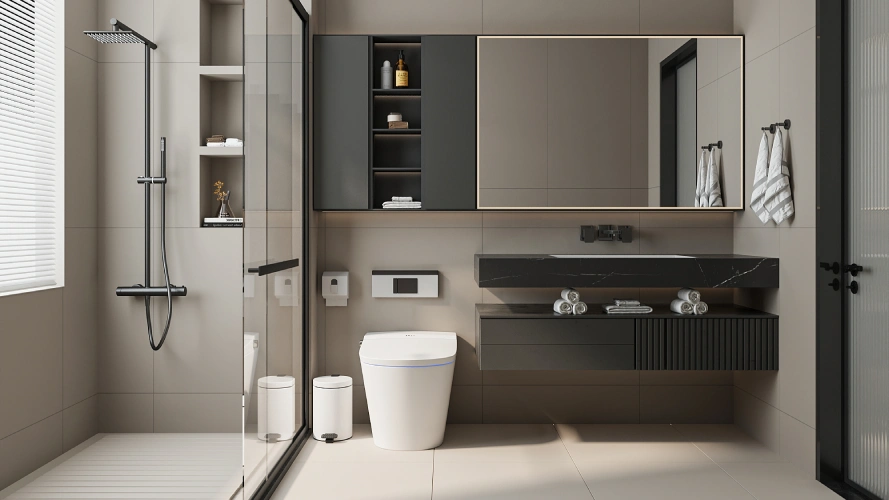
But the damage goes far beyond the water bill. It's a business risk. In one documented case on Reddit, a running toilet led to a $2,000 water bill and a nasty dispute with a tenant that was heading towards small claims court. Imagine that scenario with a hotel guest—the negative review, the potential chargebacks, the damage to your reputation. It's a headache you simply don't need.
As someone who started on the factory floor, I can tell you this: the quality of those small, internal parts is everything. A manufacturer can save a few cents on a cheaper flapper, but that decision can cost you, the hotel owner, thousands of dollars a year later. That's why when my team and I evaluate products, we obsess over these unseen details. Because reliability isn't a feature; it's the foundation of a smart investment.
2. How Do You Calculate the Real ROI of a Toilet Upgrade? (A Simple Framework)
Alright, let's get down to business. Talking about "insane" water bills is one thing, but making a case for a capital expenditure requires cold, hard numbers. As a business owner myself, I know that any investment has to justify itself on the balance sheet.
This is the exact framework I use to show my clients how this "expense" becomes a powerful investment that makes their CFOs nod in approval. It might look like a lot of math, but I'll break it down for you step-by-step.
Step 1: Calculate Your Annual Water Savings (in Gallons)
First, let's play detective and find out exactly how much water you stand to save. The key metric here is GPF (Gallons Per Flush). Your current, older toilets likely use anywhere from 3.5 to as much as 7.0 GPF. Modern high-efficiency toilets (HETs) that carry the EPA's WaterSense® label use a maximum of 1.28 GPF.
Here’s the simple formula:(Old GPF - New GPF) x Flushes/Day x Occupancy Rate x Rooms x 365 = Annual Gallons Saved
Step 2: Turn Gallons into Dollars (The Important Part)
Now, let's turn that saved water into actual dollars. And here’s where I want you to make this personal, because this is where the real power lies.
A quick note: Water and sewer rates vary significantly by city and state. For this example, I'll use a conservative national average of around $0.015 per gallon for a combined water/sewer rate. But for the most accurate and powerful calculation, I highly recommend you grab your latest utility bill right now. Find your exact combined rate—that’s the number that will unlock your true potential savings.
Here’s the formula:Gallons Saved x (Your Combined Water + Sewer Rate) = Annual Dollars Saved
Step 3: Determine Your Payback Period
This is the number your CFO or owner will want to see. How long until this investment pays for itself and starts generating pure profit?
Total Project Cost / Annual Dollars Saved = Payback Period (in Years)
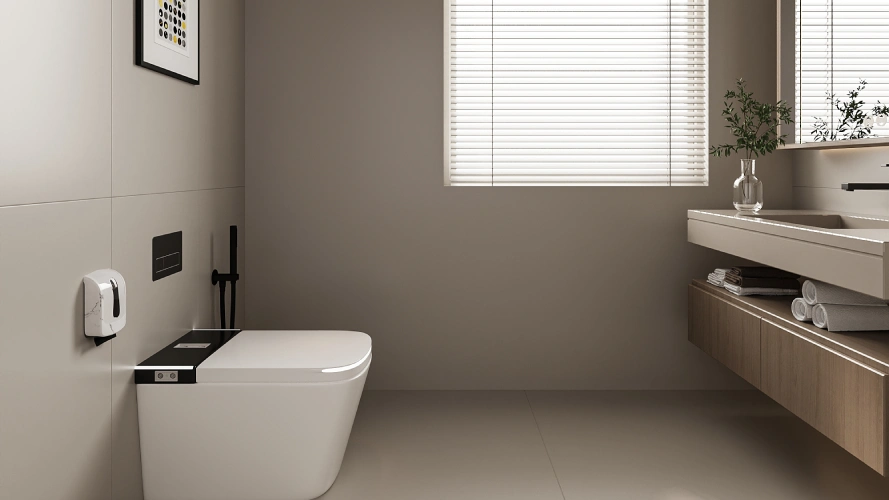
Calculate Your Hotel's Savings
(Tip: Check your utility bill for the most accurate local rate.)
And This Isn't Just Theory: Proof from the Real World
These aren't just spreadsheet fantasies; we're seeing these kinds of results in the real world.
- The U.S. Environmental Protection Agency (EPA) reported on a 397-room hotel in San Antonio, Texas, that upgraded its fixtures. The result? An annual saving of $35,000 in water and sewer bills, plus fewer maintenance calls.
- Another detailed cost analysis for a 200-unit hotel found that upgrading from 3.5 GPF toilets to 1.28 GPF models resulted in $7,042 in annual savings, with a payback period of just 5.2 years and a solid 19.4% ROI.
3. Aren't Modern Water-Saving Toilets Just More Trouble? (Debunking the Myth)
Let's be honest. I know what many of you are probably thinking because I've heard it for years from seasoned managers and plumbers: "Helen, the last thing I need is a 'low-flow' toilet that I have to flush twice."
And you know what? You're not wrong to be skeptical. Many early-generation water-saving toilets were a disaster. They gave the entire category a bad name by causing more clogs and requiring multiple flushes, which defeated the whole purpose. I've seen firsthand how a poorly designed "eco-friendly" product can create more headaches than it solves.
But here's the truth I can share from inside the industry: the technology of today is a completely different world. Modern high-efficiency toilets (HETs) are engineered to outperform their water-guzzling predecessors. The difference lies in the flushing technology. Instead of relying solely on gravity, today's best commercial toilets use systems like:
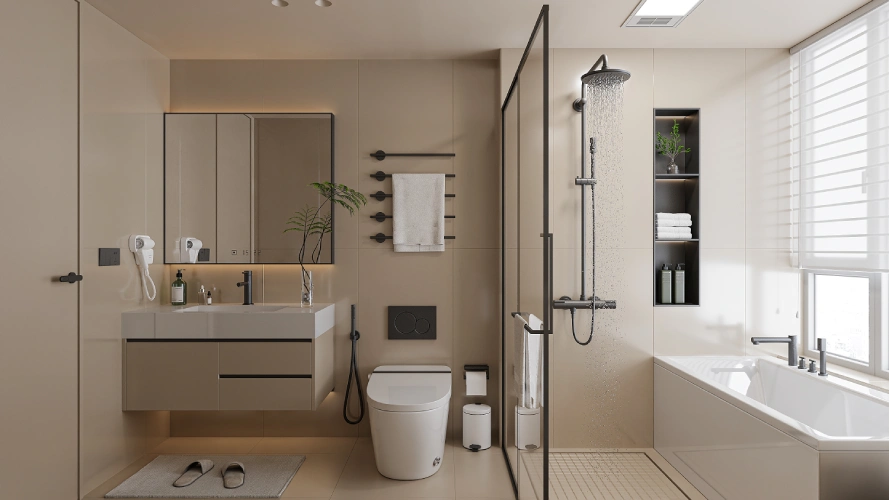
Pressure-Assisted Technology
These toilets use a special vessel within the tank to compress air. When you flush, this trapped air forces water into the bowl at a much higher velocity. The result is a powerful flush that clears the bowl effectively on the first try and is far less likely to clog, though it can be a bit noisier.
Flushometer Systems
There's a reason these tankless toilets are the standard in airports and stadiums. They are connected directly to a building's water supply line and deliver a powerful, high-pressure flush every single time. As one plumbing professional on a forum put it, there's a reason they're used in public restrooms:
"they're extremely hard to clog. I'd kill to have one in my home".
The "Midnight Phone Call ROI"
A sales spreadsheet can tell you how many dollars you'll save on water. But what's the cost of a phone call at 2 AM from a guest on their honeymoon because their toilet overflowed? What's the cost of that one-star TripAdvisor review that mentions a clogged toilet, deterring future bookings? And what's the cost of an emergency plumber visit on a holiday weekend?
Those are the real, painful costs that eat away at your reputation and peace of mind. I've read the horror stories on forums—from front desk staff in tears having to plunge toilets to guests facing legitimate safety risks from broken, leaking fixtures.
Choosing a modern, powerful, and reliable water-saving toilet isn't just about reducing your utility bill. It's an investment in operational stability. It's about reducing the number of those dreaded "midnight phone calls" and ensuring your team can focus on hospitality, not plumbing emergencies. As a new mom, I can tell you that nothing is more valuable than a quiet night. I'm sure you feel the same way about your hotel.
4. What's Your Action Plan to Turn Water Waste into Profit?
Alright, we've talked about the problems, the myths, and the numbers. Now, let's turn this knowledge into action. As someone who has spent years on the factory floor, I believe in practical steps, not just theory. Here's a simple, four-step plan you can start implementing this week to begin turning water waste into profit.
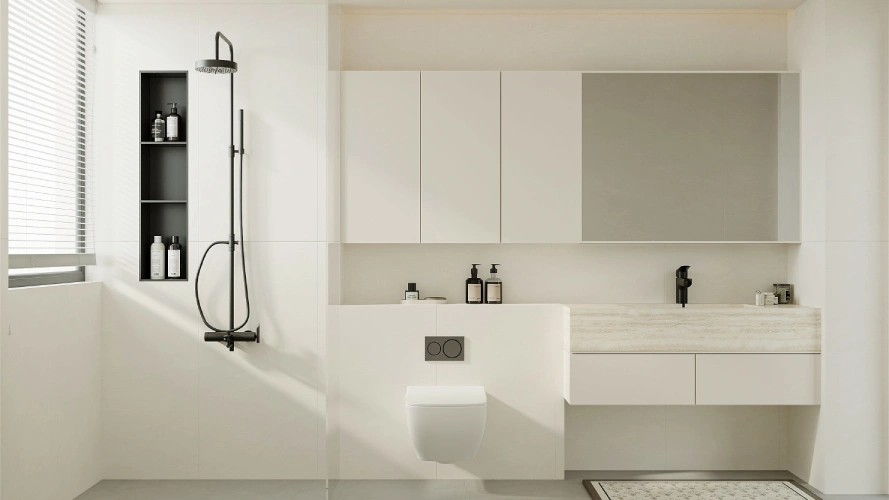
Conduct a Quick Internal Audit
Before you can plan for the future, you need a clear picture of the present. Grab a notepad and walk through ten of your rooms. You're looking for one number: the GPF (Gallons Per Flush). You can usually find it stamped on the ceramic between the seat hinges or printed inside the tank. Is it 3.5? 5.0? This simple piece of data is the starting point for your entire ROI calculation.
Hunt for "Ghost Leaks" with the Dye Test
This is a classic plumber's trick, but it's incredibly effective for spotting those silent profit-drainers we talked about in Chapter 1. Here's how you do it:
- Remove the tank lid from a toilet.
- Add a few drops of dark food coloring into the tank water.
- Do not flush. Wait for 15-20 minutes.
- Check the water in the toilet bowl.
- If you see any color has seeped into the bowl, you've found a ghost leak. This is almost always caused by a faulty or deteriorated toilet flapper.
Research Local Rebates and Incentives
This is a step most managers miss, and it can save you a significant amount of money. Many local governments and water utility companies offer cash rebates to commercial properties for upgrading to high-efficiency fixtures.
Before you even talk to a supplier, do a quick search for "[Your City] + commercial water rebate program" or visit the EPA's WaterSense Rebate Finder. You might be surprised to find programs that can significantly reduce your upfront costs, making your ROI even more attractive.
Talk to Suppliers Like an Expert
When you're ready to talk to suppliers, you're now armed with data and insights. Don't just ask for the price. Ask the questions that reveal the true quality and long-term value of their products:
- "What is the MaP score for this model?" For a high-traffic hotel, you should be looking for a score of 800-1-000 grams.
- "What is the warranty on the internal components, specifically the flush valve and the flapper?" A strong warranty is a direct signal of the manufacturer's confidence in their quality.
- "How readily available are replacement parts?" The last thing you want is a room out of commission for weeks because you're waiting on a special-order part.
By following these steps, you're no longer just buying a toilet. You're making a strategic, data-driven investment in your property's efficiency and profitability.
In summary, you've now mastered how to transform a toilet from a simple fixed asset into an "operational tool" that continuously saves you budget. At your next finance meeting, you can confidently present a bathroom upgrade plan based on precise ROI calculations.
When you start viewing your restroom systems from an operational and financial perspective, a much broader scope for optimization opens up. Beyond water bills, have you considered how to reduce cleaning costs through optimized design? Or how to cut down on emergency maintenance expenses by eliminating clogs?
The answers to these questions, along with a complete supplier review checklist, are all included in our ultimate procurement manual. To become a true expert in commercial restroom procurement, read our flagship guide now: The Ultimate Guide to Commercial Toilet Procurement: Balancing Cost, Durability, and Guest Experience.
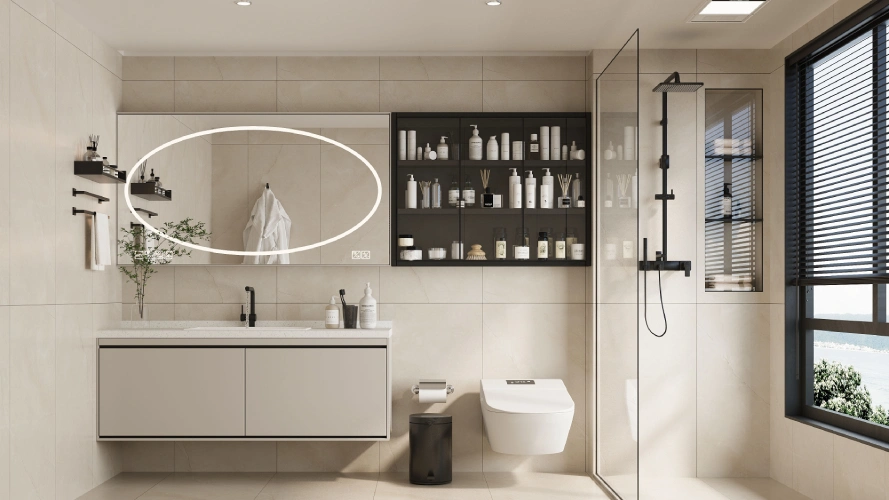
References and Sources
To ensure the professionalism, accuracy, and authenticity of our content, this article was written based on the following public information, technical specifications, and real-world industry discussions. We believe that evidence-based insights provide the most value.
1. Technical Specifications & Official Guides
- U.S. Americans with Disabilities Act (ADA) Standards: Source: Official design standards published by the U.S. Access Board (access-board.gov). These standards detail the requirements for toilet installation height, spacing, and grab bars in public restrooms, serving as a core basis for compliance review.
- U.S. EPA WaterSense® Certification: Source: Official program documentation from the U.S. Environmental Protection Agency (EPA). This certification is the gold standard for identifying high-efficiency, water-saving toilets, and its performance data was referenced for our Return on Investment (ROI) calculations.
2. Technical Materials from Industry Leaders
- Kohler Commercial Products Page: Source: The commercial toilets category page on Kohler's official website, where technical specifications for various models can be reviewed.
- Sloan Commercial Products Page: Source: The commercial water closets page on Sloan's official website, a company specializing in commercial restroom solutions.
3. Real User & Expert Discussions
- Reddit - Hotel Management Forum: Source: A community for hotel operators and managers to discuss daily operational challenges, providing a valuable source for identifying real-world pain points.
- Reddit - Plumbing Forum: Source: A community for professional plumbers and DIY enthusiasts to discuss plumbing issues, offering expert insights on equipment durability and installation best practices.
